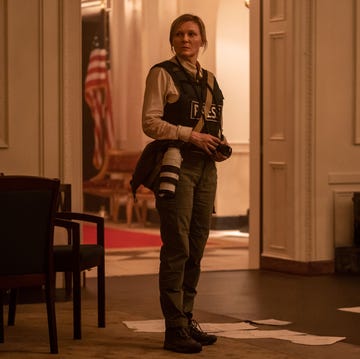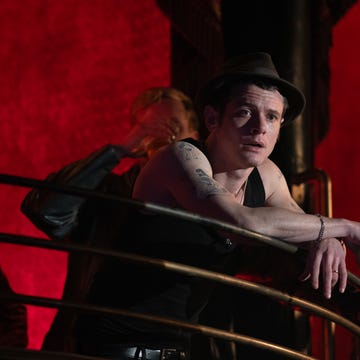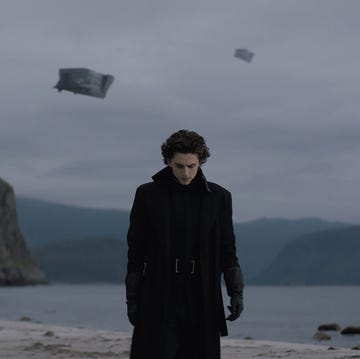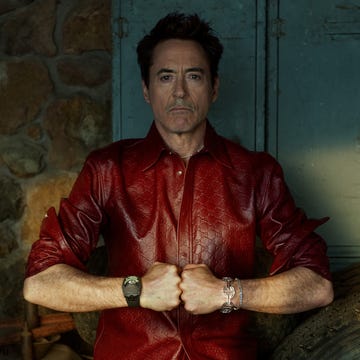With his incendiary debut Sorry to Bother You, rapper-turned-director Boots Riley brings an incredible and idiosyncratic vision to the screen with a genre-bending satire that chips away at our current moment in time. Lakeith Stanfield stars as Cassius "Cash" Green, a struggling Oakland native who finds uninspiring work at a dismal telemarketing firm. But his life quickly improves when he gets a foot hold in his job by employing his "white voice," which serves as a magical tool that allows him to sell anything to anyone—much to the displeasure of his girlfriend, Detroit (Tessa Thompson), and coworkers Salvador and Squeeze (Jermaine Fowler and Steven Yeun, respectively).
But far more than a comedy that attempts to skewer the absurdities of contemporary corporate America, Sorry to Bother You devolves into a bizarre sci-fi/fantasy hybrid, the messiness of which only elevates its artistic achievement. A film like Sorry to Bother You may be light-years ahead in its progressive voice and narrative tone, but first-time director Boots Riley’s effort to create a distinctive visual style in a comedy movie is about as old fashioned—and healthy for the medium—as it gets.
Contrary to the trends popularised by visually uninspired directors such as Judd Apatow or Adam McKay, it is actually a storied tradition to layer just as much nuance into the visual style of a comedy movie as one might into the script, acting, or soundtrack, and Sorry to Bother You feels like a return to form in this way. After all, some of the earliest works of groundbreaking cinema were comedies.
Directors like Charlie Chaplin and Buster Keaton, though accomplished actors and writers in their own right, are most significant in history for how they learned to utilize the medium of cinema—a visual medium—to compose jokes and create punchlines. In this way, Sorry to Bother You is proudly linked to the deep tradition of visually distinctive and narratively idiosyncratic comedies of cinema history like Spike Jonze's Being John Malkovich and Adaptation by Spike Jonze, Robert Altman's M*A*S*H and Brewster McCloud, Terry Gilliam's Brazil, and Stanley Kubrick's Dr. Strangelove—dating all the way back to the earliest masterworks like Chaplin’s Modern Times.
While some directors, especially in comedy, may depict a boring corporate setting like the telemarketing office from Sorry to Bother You as a bland, purgatorial void, Riley construes the whole thing like a pile of cubicles sitting on a goddamned earthquake. Office Space, another classic comedy that lacks the sort of cinematic complexity of this film, used tired, static imagery to relate a tired, static lifestyle. Boots Riley has Cash's desk quite literally bursting through the floors, crashing into the homes of the uninitiated folks to whom he is desperately trying to sell products they don't need to buy. It's not just a jarring departure from the workplace Cash inhabits; it's also a sly worldbuilding technique that gives the audience brief glances into the familiar—yet still unsettling foreign—time and place in which the events of this film exists.
Like the brilliant cacophony of puppets and prosthetics offered in Spike Jonze’s Being John Malkovich, Sorry to Bother You uses an array of mixed media to convey a world that is indomitably strange, yet all-too-familiar. For better or worse, the burdensome fingerprints of the blockbuster machine are nowhere to be found on Sorry to Bother You, allowing for Riley and cinematographer Doug Emmet to venture into worlds of claymation, daytime television, commercial shlock, art installations, and performance art, all amidst a visual world that is as richly coloured and detailed as it is messy and insane.
The editing in Sorry to Bother You is singularly deafening as well. College film professors love to talk about the formal elements of cinema, basically implying, the way a film’s sound, imagery, and editing engage with each other to compose a piece as a whole. In the early days of cinema, when trailblazers like Georges Méliès and Charlie Chaplin were quite literally creating the language of film as we know it today, these elements were extremely important to note, and easier to recognise, because a new formal quality was being introduced with each new entry into the young medium. But we don’t really leave the movies talking about those qualities anymore. Aside from the acting, writing, or maybe the soundtrack, the general public isn’t interested in the mechanics of filmmaking like perhaps they once were.
That's not the case here. Editing is just as important for the visual medium of cinema as anything, and there are cuts in Riley’s film so hard, and so visceral, that you will be rollicked like a Coney Island roller coaster on a dewey afternoon. Towards the ending, there is an unexpected cut to black that was so surprising that it had the audience in my cinema vocally astounded. An editing style that draws attention to itself in this way is not simply good in and of itself. But, especially in a comedy, it’s special when you get close-lined by a cut. It just doesn’t really happen anymore.
Like Being John Malkovich, another fantastical satire that explores corporate malaise (albeit on the late-'90s side of the recession), Sorry to Bother You descends into the ludicrous—and it goes way deeper than anyone could imagine. The images presented in the last act of the film, while truly shocking and perverse, are yet another indicator that Riley has spent just as much time thinking about the statements made by visual elements of the film as the ones made in the narrative. Donald Glover’s "This Is America" and Jordan Peele’s Get Out come to mind when considering the deep significance and symbolic meanings of the images in Sorry to Bother You, with all three of the films seeming to build together a sort of contemporary collection that examines the menace of capitalist culture through a black lens. Though Glover and Peele’s works are not entirely comedic, the two multi-hyphenates have a storied history in the genre; all three filmmakers seem to be proclaiming in their works that words and sounds are not enough to convey the depth of this centuries-long reckoning, and the lens itself must be forced into the frame.
Not every film need be a shocking, over-the-top postmodern frenzy of formal elements like Sorry to Bother You to be an exceptional piece of filmmaking. But in an age when every comedy looks like This is Forty, when all the most successful box office films look like grey, washed out car commercials, and when young aspiring filmmakers are undoubtedly taking inspiration from the hollow, Fisher-Price™ imagery of Marvel movies, a spectacle of the senses like Sorry to Bother You feels monumental. And like all the great works of comedy from the silent era to today, Boots Riley’s new film is as funny as it is revolutionary.
Dom Nero is a Senior Creative Producer at Esquire, where he also writes about film, tv, tech, and video games. Elsewhere, Dom hosts Eye of the Duck, a podcast about essential movie scenes.















